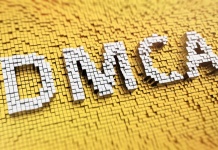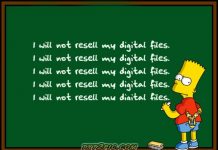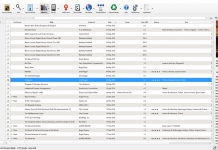 The publishing industry is quickly embracing digital publishing and is basically facing the same issues that the music industry had a few years ago.
The publishing industry is quickly embracing digital publishing and is basically facing the same issues that the music industry had a few years ago.
DRM, specifically, is a very complicated issue. Publishers are afraid that without it file sharing will ruin their business—but they should be equally afraid of how DRM can be anti-consumer and limit the adoption of e-books.
Beyond locks
While I can understand the situation of the publishers, I do believe that the publisher-reader/customer relationship should be built on trust, rather than digital locks and artificial scarcity.
One of the most common answer to this problem is what is commonly called “social DRM.” I see two specific components to social DRM:
1. A technical component to identify the customer.
2. A social component to customize the media.
The technical component is a digital watermark, that can link an e-book to a specific customer. Therefore, if an e-book is redistributed through file sharing applications, it should be possible to identify who originally distributed the book. Of course, none of these digital watermarks are perfectly secure, and some of the customers will probably get rid of the watermark. Normal DRM suffer from the same problem: LIT is currently a very popular format among the e-book community for this specific reason.
What most counts: a relation of trust
But the most important aspect isn’t this digital identifier embedded in the e-books: it’s the social component, and this is where you build a relation of trust.
A watermark should be perceptible: it is even more important to tell your customer that you created specifically this file for them, than to track them if they made some sort of copyright infringement. Moreover, this component of the social DRM experience should be customizable and fun.
To identify a customer, you need some sort of ID: it could be something standard such as an OpenID, or specific to a company such as the new Adobe ID system. We could imagine a service similar to what gravatar does for avatar, where customers could link to their ID a customized bookplate (ex-libris) that would appear on the second page of their e-books. This would appeal to collectors, and make the experience of tagging your book with your ID much more pleasant overall.
A role even for current DRM providers
In a social DRM world, while we wouldn’t need any sort of gatekeeper to control the access to our content anymore, we would still need services that can certify that an ID is valid and a technology capable of identifying e-books that are illegally downloaded. This would ensure that even current DRM providers wouldn’t go out of business: they would get in competition with each other in an open market where the best user experience and safest watermark would win.


































That is acutally available with MS Reader files. Their lowest level DRM just inscribes the email address of the purchaser visibly in the title page. MS only made one mistake with Reader (IMO). They didn’t open it up to non MS platforms. Otherwise, it’s a well-thought-out application.
And of course eReader does the social bookplate-style watermarking in addition to its credit-card DRM locking.
I really like the bookplate idea, especially if we can customize them for each book we buy. It almost makes DRM sound… fun. Okay, maybe not fun, but velvet cage-ish.
this is over-simplification … the types & applications of watermarking are extremely broad … an essential value in digital watermarks is the ability to objectively serialize &/or tamperproof signals – receipts to differentiate between marketing & piracy (so-called “digital copy problem”)
>>>Therefore, if an e-book is redistributed through file sharing applications, it should be possible to identify who originally distributed the book.
Only in theory.
Reality will bite you this way:
You lose your iPhone. Its found by a 1337 who is able to pull all the watermarked books off and throw them on P2P for props.
No perfect solution.
Only least annoying to the customer (who is the one that matters!).
All of this presumes that some form of DRM is necessary. Personally, I’m not so sure. I think the number of readers out there willing to pay for value, and actually buy content they read, even if the can get it “free” form a file sharing site is sufficient for all concerned to make money, even if people do pirate content. And since I haven’t seen a DRM scheme that lasted uncracked very long, and don’t expect to, I don’t see the practical point of having it.
DMcCunney for the win.
Also, which is the *average person most likely to do*? Grab an ebook with a few taps on an iPhone 3G or a few button presses on a K, or say, Gee, I’ll wait until I get home and then I can:
1) Search and search and search for a free version
2) Risk picking up malware
3) Check out the freebie to make sure it looks OK
3a) Multiple versions? Which is best?
4) Load it into iTunes, email it to the K*
5) Sync the iPhone, download to K*
(*my K steps might not be exact, but you get the idea)
That convenience is a major selling point for the Kindle, whose built-in Whispernet allows owners to browse titles, buy, download, and read them from whaerever they happen to be.
Convenience rules. I’ve seen various titles on the darknet. They aren’t in any form I’d try to read as is. I have the tools needed to put them in a readble form, but I place a fairly high value on my time. It would cost *more*, viewed that way, to download a “free” copy and make it readable than it costs to simply buy one. We pay other people all the time to do things we can’t do or don’t wish to do. This is simply one more instance. I’m perfectly happy to pay someone to produce well edited and properly formatted copies of books I want to read.
The equation changes a bit if the download is a cracked copy of a commercially produced ebook, but not much. I’m also fussy about wanting to see authors of books I read getting paid for it, and I want my purchase to count on their royalties. For that matter, I know a number of folks in publishing who are responsible for editing and producing books I read. I like to see them get paid, too.
But ultimately, I don’t believe DRM contributes to either of those goals.
MIKE CANE “You lose your iPhone. Its found by a 1337 who is able to pull all the watermarked books off and throw them on P2P for props.
No perfect solution.
Only least annoying to the customer (who is the one that matters!).”
who said ANYTHING about perfection? you cannot collect 100% of taxes levied – … you cannot prevent the sale of personal entropy which results in ID Theft (although in a perfect sense there can be only *you*, right) … WoW IDs sell at a premium to SSN, btw, in the “underworld” …
what I am referring to is that a DRM is a file-format – no real value-add has been shown to consumers. watermarking, like insurance, at the very least enables accounting … perfect, no … but for once if you could differentiate between “piracy” & “marketing” – the original point – you know who is “willing to pay” … all we have know is lobbying & sqeeky wheels that get plenty of oil …
perfect? is every bill in your wallet not a counterfeit? how do you know? in my part of the country we have a 1-3% counterfeit rate (it varies – but so does tax cheating & the IRS outsources collections to profit-seeking entities & still LOSES money – $75 mil last year, fact check that) – so, we need tools that assist in LIMITING damage to value creators … saying something can be perfectly copied and ending the sentence is obvious … information theory works for the good guys and the ahem – bad guys – and how do we differentiate between the two?
the argument is that we need a more equitable way to understand where & who creates the value (preferably that often underestimated double entry accounting system that has formed the basis of economics for 100s of years) … massive grabs of “rights” by corporate entities without regards to the individuals responsible for the conception of the work is our collective problem … historically so …
btw, what do you do? how do they measure your contribution (the they being the who & when you get paid)? is it equitable? any room for improvement? better accounting? what is the “value” of your time?
mis-typed e-mail address … pardon!
@digitalshaman
“what I am referring to is that a DRM is a file-format – no real value-add has been shown to consumers. watermarking, like insurance, at the very least enables accounting … perfect, no … but for once if you could differentiate between “piracy” & “marketing” – the original point – you know who is “willing to pay” … all we have know is lobbying & sqeeky wheels that get plenty of oil …”
DRM is not a file format. It’s a method of locking a file. Just as different file formats exist for ebooks, so do DRM methods.
Consider that Amazon’s Kindle uses the Mobipocket ebook format, but does not use the same DRM as Mobipocket. So if you already bought titles from Mobipocket to read on another device, and you buy a Kindle, you can’t read your existing purchased content. You must buy it again. The sames holds true for content from the Kindle store — you can’t read it on a different device, even if that device supports Mobipocket, unless you take steps to hack and break the DRM. You are intentionally locked into a device and a vendor.
I want to download digital content *once*, and read it on whatever device I have at hand. So I want a format supported on as many devices as possible, with a DRM scheme (if there has to be one) that permits that.
Right now, I sidestep the issue. I don’t buy DRMed content. I get content by preference in HTML format, which I can read native or convert. If I must buy content protected by DRM, my likely choice is Mobipocket. It’s supported on a wide range of devices, and has a wide variety of content available in that format.
Down the road, that might shift to ePub, as more producers adopt the format, and more tools become available to convert ePub books to other formats for devices that don’t support ePub as a native format, assuming I’m not stuck with DRM getting it the way.
“I want a format supported on as many devices as possible, with a DRM scheme (if there has to be one) that permits that.”
re-read your sentence it concedes the point I make … DRM *is* a file format – it adds nothing to the file that the underlying formatting does not not already add – or, name it, please & with due respect … the company that makes the format that can get the publisher paid WINS! (well, even better, the writer should get paid, right?) – alas, we *cannot* stop copying but we can serialize the copies in a file-format independent way.
you do not appear to concede why DRM failed to begin with – why don’t *you* by DRM’d format? *why* is Mobipocket supported more so vis-a-vis it’s competitors? How about iTunes? Jeesh, what is a consumer electronic standard? Patent pool? Who decides? … formats become useful when they reduce some cost of doing business or increase margins – lock-in is the cost to the consumers … when the lock-in means a high cost to switch a consumer is unlikely to make a change …
That can mean any number of things … But in the context of “DRM” – in order to be secure (which they are not since they do not impart on the original formatting any value – you as a consumer sees or pays for) the assumption is as Bruce Schneier said (attribution), like trying to make mater water less wet.
DRM is always in the way – it is a file format that provides no value add to you the consumer & so poorly so that it fails to actually keep material DRM’d – name a single file that has not gotten out of it’s DRM shell? Why?
@digitalshaman
You are preaching to the converted here in your objection to DRM. I’m not the one you need to convince.
That said…
If you think “file format” and “encryption method” are synonyms, I won’t argue the point. I’ll simply note that you’ll encounter all sorts of confusion when talking to other people.
As for DRM, the question is whether it has failed to begin with. From where I sit, if it had actually failed, no one would be using it. The folks who apply it still think it serves a purpose, so we are still stuck with dealing with it. I’d like to think it’s doomed to fail, but I don’t think it has yet, and I don’t even hear its death rattles.
I don’t buy content due to lack of standards as well as DRM. Right now, I read ebooks on a Palm OS PDA. I need to maintain five different viewers to handle all of the content on my device, and recall which content is in which format. That’s just nuts, and that’s just content that isn’t DRM protected.
I really hope standards will reduce the confusion, but I’m not holding my breath while I wait.
Meanwhile, my biggest desire is content I can read on whatever I happen to have. DRM is secondary. The two most widely supported formats are Mobipocket and eReader, in terms of the number of devices they run on. More content is available in Mobi format. (The one inexplicable lack in Mobi is no support for Mac OS/X, which surprises me. They have announced intended support for the iPhone.)
Where possible, I roll my own, converting HTML for the Plucker offline HTML viewer for Palm OS, but not everything is available as HTML. Mobi is my second choice.
I haven’t bought ebooks thus far because there hasn’t been anything I want badly enough in ebook format to justify dealing with DRM. I have about 3,500 volumes in various formats on my device, and don’t exactly lack for stuff to read. But I can see the possibility that there will be something I want badly enough, and I’ll have to deal with DRM, if only to break it. Right now, I have better uses for my time.